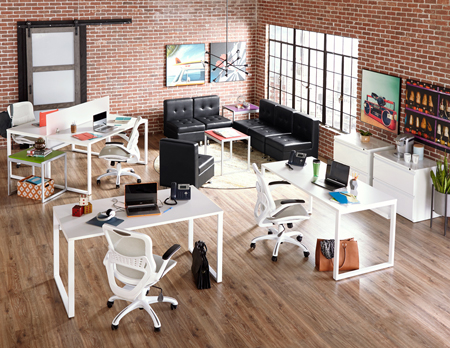Understanding the differences between affordable commercial furniture in Australia and domestic furniture involves exploring various aspects, from design and materials to functionality and durability. Both types of furniture serve different purposes and are tailored to meet distinct needs. While domestic furniture is crafted for personal living spaces, affordable commercial furniture in Australia is designed for use in public and business environments. Let’s delve into a comprehensive comparison across multiple dimensions to thoroughly explore these differences.
1. Purpose and Functionality:
Domestic Furniture: Domestic furniture is primarily designed for comfort, personal preference, and aesthetic appeal. It focuses on creating a cozy and welcoming atmosphere within homes. Designs prioritize individual tastes, diverse styles, and a wide range of materials, catering to the specific needs and preferences of homeowners. Comfort, durability, and style often take precedence over other factors.
Commercial Furniture: In contrast, commercial furniture is created with a focus on functionality, durability, and practicality. It’s tailored to withstand high usage and often adheres to safety standards. The primary goal is to provide comfort while accommodating a larger number of users. Ergonomics and space optimization are crucial factors in commercial furniture design to ensure suitability for various settings such as offices, hotels, restaurants, hospitals, and public spaces.
2. Design and Aesthetics:
Domestic Furniture: Designs for domestic furniture can vary widely to match diverse personal tastes. They often emphasize individuality and aesthetics, offering a broad spectrum of styles, colors, and patterns. The focus is on creating a homely and personal ambiance, allowing for creative and unique design elements.
Commercial Furniture: Commercial furniture tends to follow standardized designs that prioritize functionality and uniformity. While aesthetics are still important, they lean towards more neutral and versatile styles that can complement a wide array of settings. Clean lines, durability, and ease of maintenance often take precedence over intricate designs.
3. Materials and Construction:
Domestic Furniture: Domestic furniture often incorporates a broader range of materials, including wood, fabric, leather, and various metals. The emphasis might be on luxurious materials and detailed craftsmanship, with a focus on individual pieces rather than mass production. Quality and aesthetics frequently play significant roles in material selection.
Commercial Furniture: Materials for commercial furniture are selected for durability, ease of maintenance, and cost-effectiveness. Common materials include industrial-grade fabrics, laminates, metals like steel or aluminum, and engineered woods. Manufacturers prioritize materials that can withstand frequent use and are easy to clean and maintain.
4. Durability and Construction Standards:
Domestic Furniture: While domestic furniture can prioritize aesthetics and comfort, it might not always be constructed to withstand heavy usage. It’s built for personal use within homes and may not adhere to the stringent durability standards required in commercial settings.
Commercial Furniture: Commercial furniture is constructed to endure heavy and constant use. Manufacturers adhere to strict industry standards and regulations, ensuring products meet safety and durability requirements. The focus is on longevity and withstanding wear and tear, often resulting in reinforced construction and high-quality materials.
5. Cost and Budget Considerations:
Domestic Furniture: Cost considerations for domestic furniture can vary greatly, ranging from budget-friendly options to high-end, luxury pieces. Prices are often influenced by materials used, craftsmanship, and brand reputation. Personal preferences play a significant role in determining the budget for domestic furniture.
Commercial Furniture: Cost-effectiveness is a primary consideration in commercial furniture. While quality is essential, manufacturers strive to balance durability and functionality without significantly inflating costs. Bulk purchasing and standardized designs often result in more predictable and competitive pricing for commercial buyers.
6. Customization and Flexibility:
Domestic Furniture: Customization options are more prevalent in domestic furniture, allowing consumers to tailor pieces to their specific preferences. From choosing fabrics and finishes to modifying designs, homeowners often have more flexibility in personalizing their furniture.
Commercial Furniture: Commercial furniture generally offers less customization due to the need for standardized designs that can accommodate a wide range of settings. However, some manufacturers provide limited customization options while ensuring the integrity of design, durability, and functionality.
7. Distribution and Sales:
Domestic Furniture: Domestic furniture is typically sold through retail stores, online platforms, and specialized furniture outlets, targeting individual consumers. Marketing strategies focus on appealing to personal preferences and lifestyle choices.
Commercial Furniture: Commercial furniture is commonly sold through specialized suppliers, wholesalers, or directly to businesses. Sales strategies revolve around showcasing durability, functionality, and cost-effectiveness, often involving bulk purchases or contracts with commercial entities.
In summary, the differences between commercial and domestic furniture encompass various aspects, from design and materials to durability and functionality. Domestic furniture prioritizes personal comfort, aesthetics, and individuality, while commercial furniture emphasizes durability, functionality, and practicality to meet the demands of public and business environments. Both types of furniture cater to distinct needs and preferences, serving their respective purposes in different settings.
